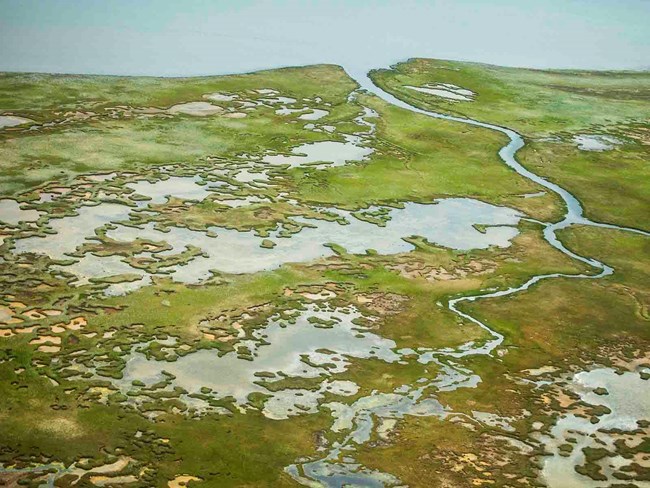
Tens of thousands of shallow lakes are distributed across the Arctic Network. Although small, these ecosystems serve a diverse array of ecological functions ranging from flood protection, groundwater recharge, and water purification to providing prime habitat to moose, waterfowl, and furbearers. Because they are so productive and diverse, shallow lakes are important to the people who hunt and trap within the park boundaries. They are also important indicators of the health and integrity of the natural environment. There is some evidence that shallow lakes are disappearing throughout Arctic and subarctic regions. The loss of these important habitats will have important effects on water quality, water storage, and wildlife habitat.
We monitor shallow lakes in Bering Land Bridge National Preserve, Kobuk Valley National Park, and Noatak National Preserve in order to understand:
- Long-term trends in the area, distribution, and number of shallow lakes and ponds.
- Decadal-scale trends in the water chemistry of shallow lakes and ponds.
- Long-term trends in the structure and composition of littoral vegetation.
- Long-term trends in macroinvertebrate taxa richness.
Contact: Amy Larsen
-
Arctic Lake Drainage
As permafrost thaws, lakes fill with water. If the water levels get too high, erosion channels can form and drain the lakes. In recent years, large lakes in Bering Land Bridge National Preserve have drained. This is of particular concern because these large lakes are important habitat for Yellow-billed Loons.
- Duration:
- 1 minute, 21 seconds
Learn more
Last updated: May 16, 2024

